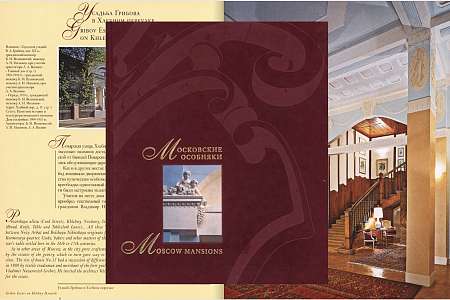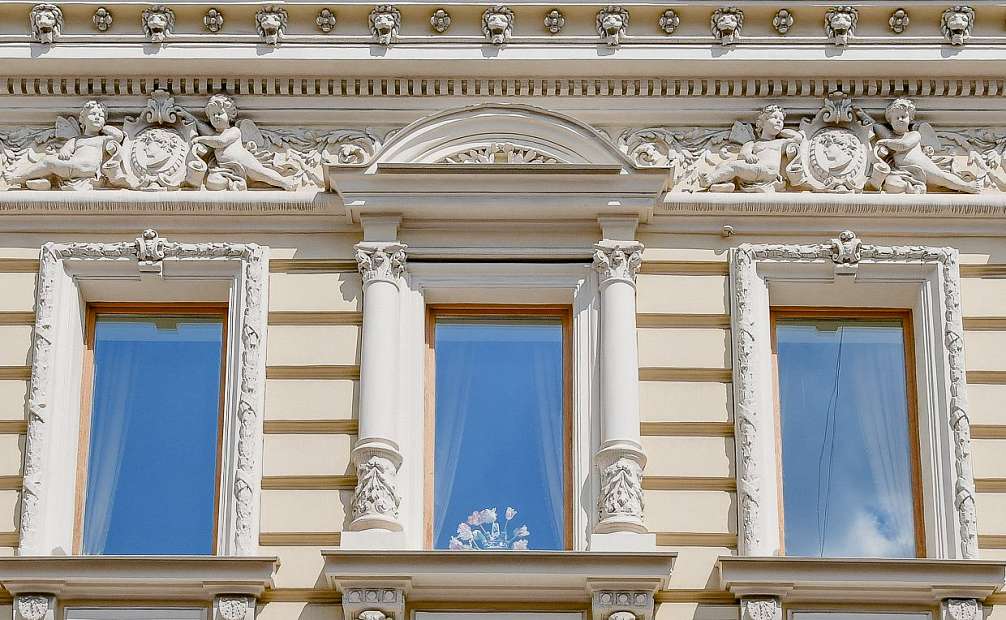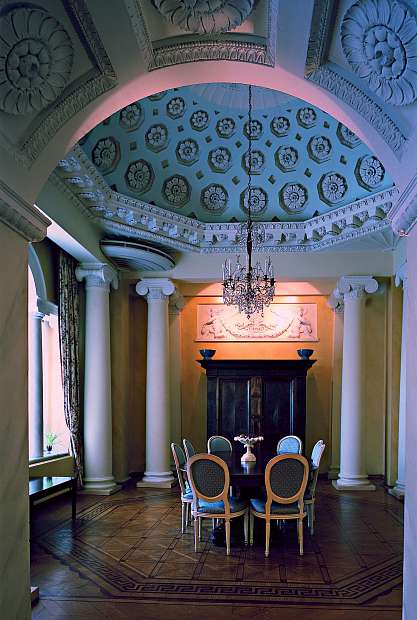
City estate of V.V. Dumnov - N.L. Markov

Kalashny Lane is a small street in the center of Moscow with the length of 450 meters, located in the Arbat and the Presnensky Districts. The history of the lane dates back to the 16th century: by order of Ivan the Terrible, the Oprichnina Palace was erected along the Neglinnaya River, behind which a settlement of the sovereign’s people soon appeared. Kalashniki (royal bakers who supplied the royal oprichniks with bread) also lived there – hence the name of the street.
Currently, Kalashny Lane retains its cozy old look, delighting passers-by with perfectly preserved pre-revolutionary buildings. Walking by, one cannot but pay attention to the two-storey beige mansion under modern number 6. By the beginning of the 18th century, this house was listed in the parish of the stone church of John the Merciful, after which it was taken over by the family of a brigadier, Major General Grigory Yakovlevich Naumov.
In 1761, it became the property of a retired lieutenant (later colonel) of the Life Guards of the Preobrazhensky Regiment, state councilor Nikolay Yakovlevich Olenin (Alenin) and his wife Anna Semenovna Olenina (Alenina), née Volkonskaya. The new owners rebuilt the dilapidated buildings in their yard and moved wooden buildings (both residential and utility facilities) from the western border of the site to the southern one.
The estate has been owned by the descendants of the Olenins for almost half a century, after which it became the property of Aleksandr Alekseevich Smirnov, a member of the Moscow Commissariat depot of the 7th class, state councilor and cavalier. In 1815, A. A. Smirnov bought a plot of land from the deacon and church site of the Church of St. John the Merciful, which was abolished after the Fire of Moscow in 1812, from the Ecclesiastical Consistory and attached it to the south-eastern part of the possession. The estate was gradually extended with stone residential buildings: two-story house on Kalashny Lane, one-story house on Maly Kislovsky Lane and one-story utility buildings close between them, along the border.
After a series of changes of owners, in June 1887, the plot was sold to a well-known book publisher, hereditary honorary citizen Vladimir Vasilievich Dumnov. It is thanks to him that the estate has reached our days, because, according to the plan to expand the roadway, some of the buildings had to be demolished.
Having started his career in publishing with a modest position as a clerk in the publishing house of the Salaev brothers, Dumnov successfully married one of his bosses’ nieces, and after their death headed the company, turning it into one of the largest publishing houses in Russia. Textbooks published by Dumnov’s company were used in every Russian school, and Vladimir Vasilievich competed with Sytin’s publishing house in a charity project to publish books for the poor.
Having become rich, Dumnov conceived the construction of a house – the symbol of his fortune.
Resorting to the services of architect A. M. Shcheglov, in 1888 he built a two-story stone residential building with a residential vaulted basement. At the same time, a small garden was arranged in the northern part of the territory, in front of which a brick fence with a gate appeared along the lane.
In 1889, a stone stable was built along the southern border of the estate. Judging by the magnificent decoration, it can be supposed that the house was one of the most luxurious Moscow mansions of the late 19th century. At the back of the courtyard there were stone non-residential buildings: a carriage house, two cellars and a stable.
Interestingly, this house at the very center of Moscow was surrounded by purely patriarchal buildings at the end of the 19th century. ‘My grandfather had a cow, it joined a herd going up Sredny Kislovsky Lane. The herd turned to Arbatskaya Square, went down Prechistensky Boulevard to the Moskva River and crossed the Kamenny Bridge to the pasture,’ Ekaterina Vasilievna Sakharova-Polenova, a granddaughter of famous landlord Yakunchikov, who lived on the neighboring Maly Kislovsky Lane, writes in her memoirs.
On April 1, 1896, V. V. Dumnov sold his house with all the buildings and land to an engineer – state councilor Nikolay Lvovich Markov. Later, a smaller extension was erected on the north side with a balcony on the second floor and a staircase to the basement on the first.
According to the bill of sale, the last owners of the estate from 1899 to 1917 were the hereditary honorary citizen, oil industrialist Arutyun Makarovich Popov, and his heirs. By that time, the residential building had sewerage and water supply, and the façade of the mansion was decorated in the Baroque style with stucco figures: lion faces, angels and fancy curlicues.
After 1917, the German Red Cross settled in the mansion on Kalashny Lane, and in the 1930s apartments of employees of the German Embassy were located here. Since 1943, the Netherlands Embassy has been located in the mansion.


















